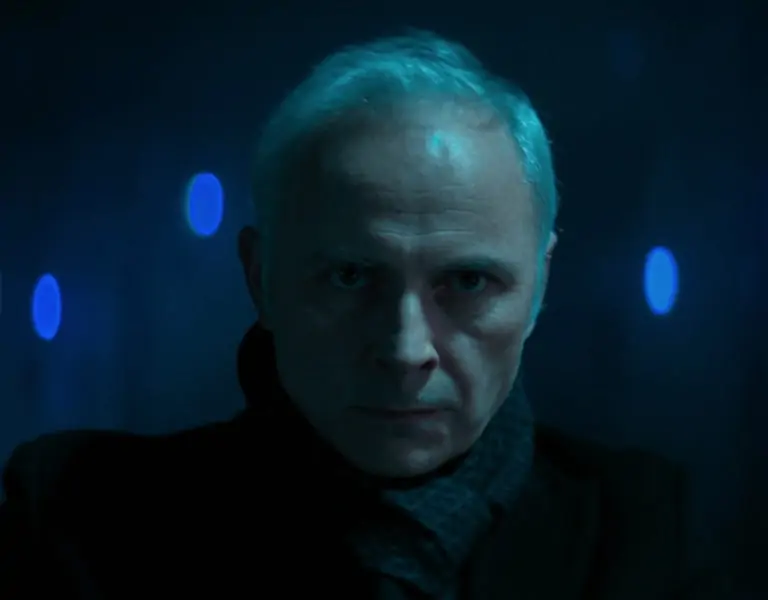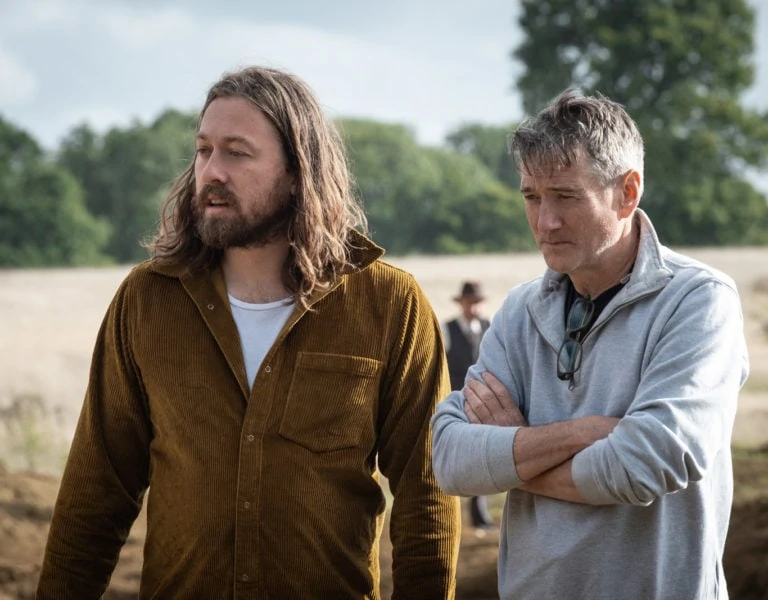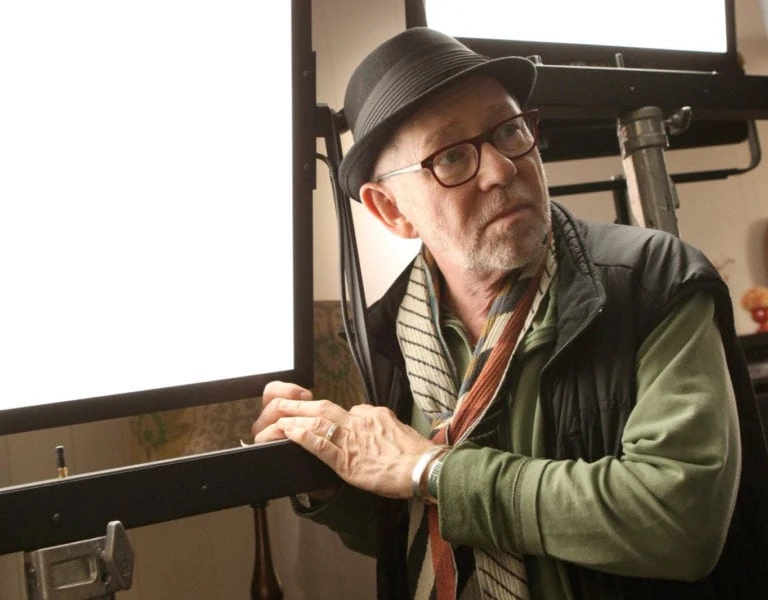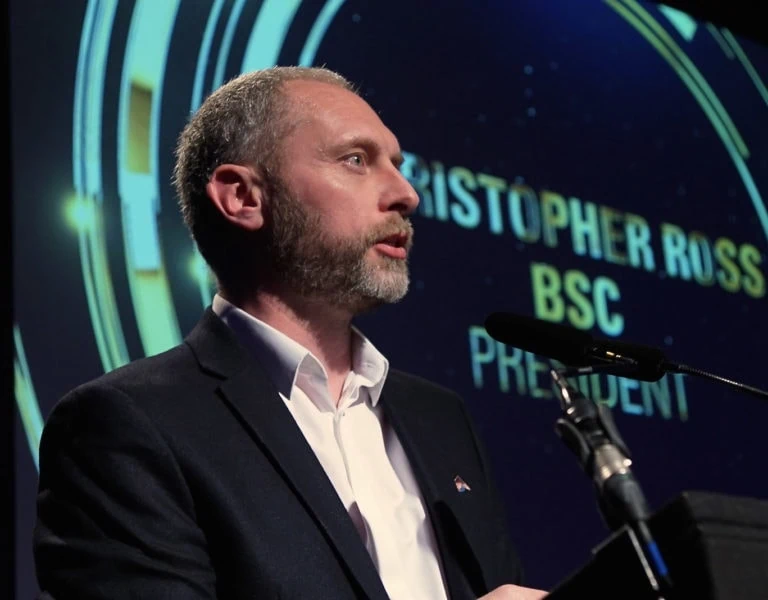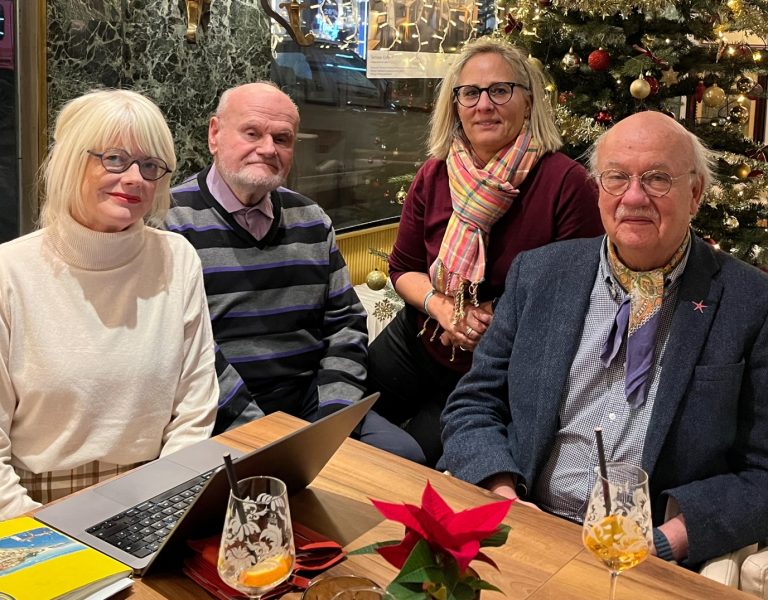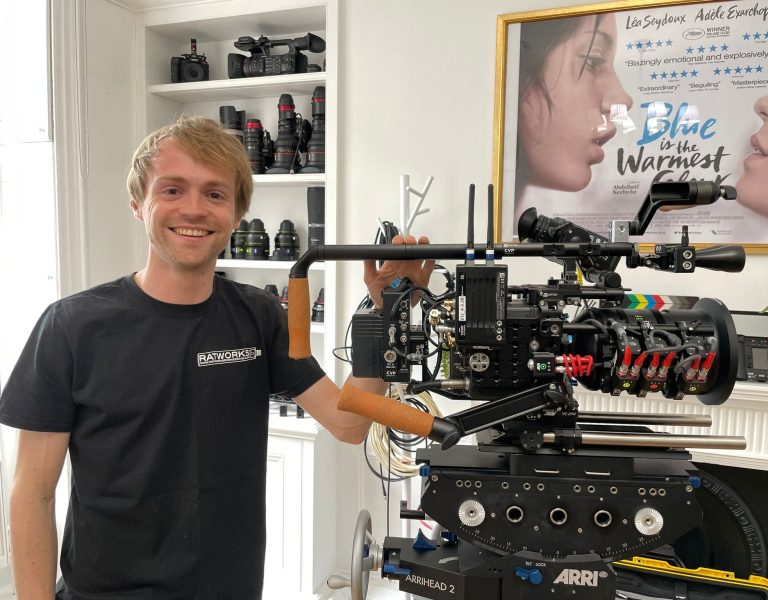How did you collaborate with the director on this project?
In pre-production, Amanda and I set about investigating the scripts, not just to determine the character’s story arcs and how we can help lead the audience on the characters journeys, but also looking into the vast amount of medical information we had to contend with. The operations and procedures performed in the show, some of which were incredibly complex, needed to look and feel as close to reality as possible. It felt like a real team effort in that sense, working closely with Davey Jones and his amazing SFX team, our brilliant medical advisors, some of whom the storylines were loosely based on, given they had been in these situations and performed these procedures. Our producer, Betsan Morris Evans was of great support throughout. We also worked with our first assistant director, Tom Heaven to realise the events in the scripts. We wanted the camera styles to reflect the mood of each scene whilst keeping to the show style, using handheld for the franticness, emotional beats, slow drifts, and static frames to introduce the quieter moments, architectural wides finding interest in shapes and frames within frames, using the location to its best potential.
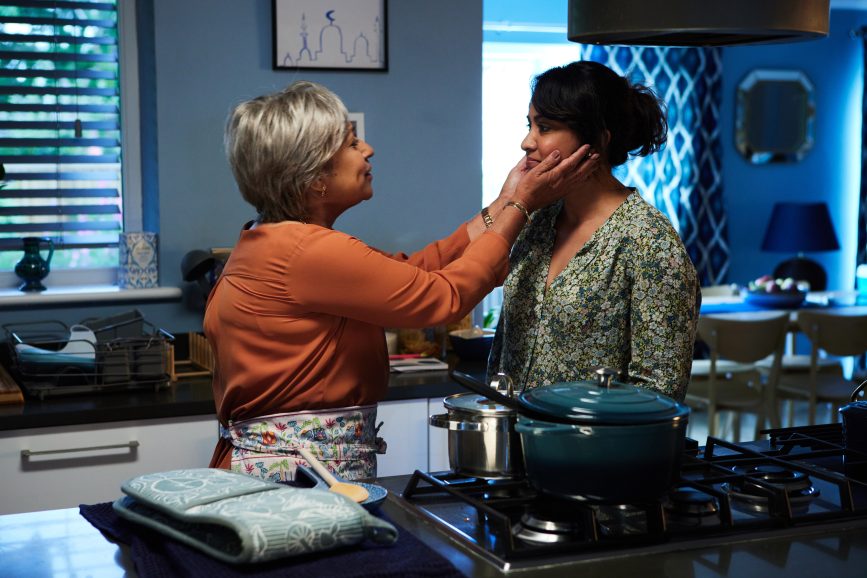
Were there any particular pieces of instruction from the director (or otherwise) that stood out to you when achieving the visual style?
The challenge with our episodes being sat in the middle of the season, and the show’s visual language somewhat already established by James Griffith and Richard Mott on the first block, was to keep some consistency for the show in its identity but progress the photography as the characters’ storylines developed. Amanda and I were keen for our episodes to reflect the situations our characters found themselves in and to break our visual rules where it felt necessary. Therefore, we did adopt some of the shooting styles from episodes 1 and 2, and I worked closely with our assistant camera operator, Tom Williams to then adapt the shooting style as our story’s progressed.
We had the opportunity particularly with Lisa McGrillis’ character, Helen in episode 4, to explore the myriad of emotions she’s put through. From being left to run the hospital as Guy goes AWOL, dealing with a patient’s grief, her own dilemmas with her sister and her marriage break down, we could change up our styles to reflect that. Our brilliant scripts gave us a wealth of opportunity with all the characters to create different moods in that respect.
What was the key mantra when capturing the realistic and frenetic world of Maternal?
Stay true to the characters and story.
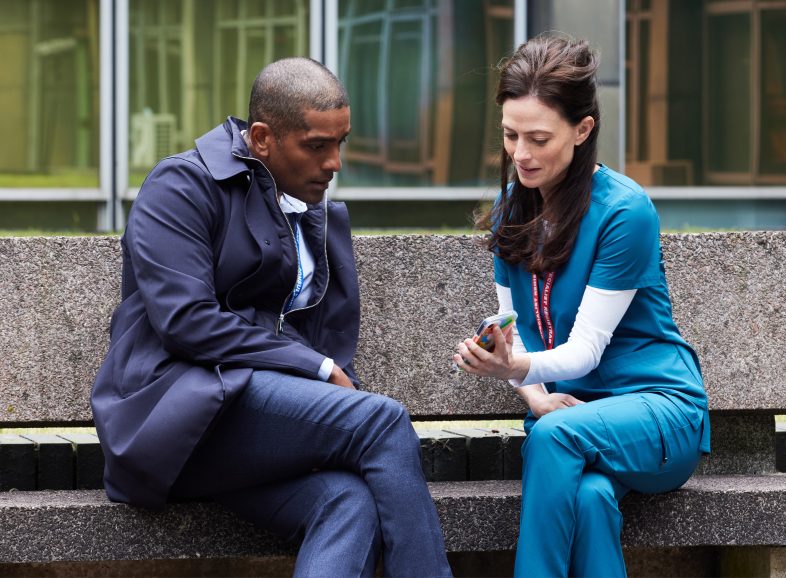
What were the visual inspirations for the project?
We had a lengthy deck of lighting and camera references that we all contributed to. Richard and Griff then put a lookbook together that we could pull inspiration from as we went. There were a few great references from Manchester by the Sea, Never Let Me Go, Promising Young Woman and some more obscure, scene specific references from The Farewell and The Killing of a Sacred Deer.
Maternal quickly took on its own identity though, and I’m pleased the show progresses with the story.
When shooting hyper realistic and typically cold settings like a hospital, how do you personally try to imbue the scene with emotion?
In grading, I try to find a natural balance in colour so that the sets and costumes can speak for themselves. I’m quite specific with colour balance on lamps to keep a consistency across the final image where I can.
Our set also reflected the different parts of the hospital well, with contrasting colours and dressing for different wards and other areas, so you could tell where you are at a given point. Surgery was really the only place that was purposefully left cold to feel sterile which helpfully reflected the professional, straight forward, almost cut-throat work environment our surgeons enjoy. So Maternal doesn’t really strike me as a cold setting in that sense. I find that a good colour contrast and balance can help stop the environment feeling overly cold or warm unnecessarily, especially with blue curtains everywhere. Paul Harrison our colourist at Residence has an amazing eye and was brilliant at realising our intentions.
In terms of photography or camera placement, the dream is to always reflect what’s in the mind of the character and let the audience feel what they are feeling and see the world form their point of view. In the scene where Helen receives the call informing her that her sister has been brought in unresponsive, Helen goes from being in total control to suddenly emotionally torn, and her venerability is exposed. We wanted to show her lost in the corridor on our wide angles, but also sit in with her as she’s receiving the news and processing the information. Tom Williams pushes the camera in as she receives the news; we feel a close connection with Helen and then it’s interrupted as Tessa breaks up the moment. We found some lovely frames for Helen around the hospital that reflected her mood at that time, and I love how that episode has come together.
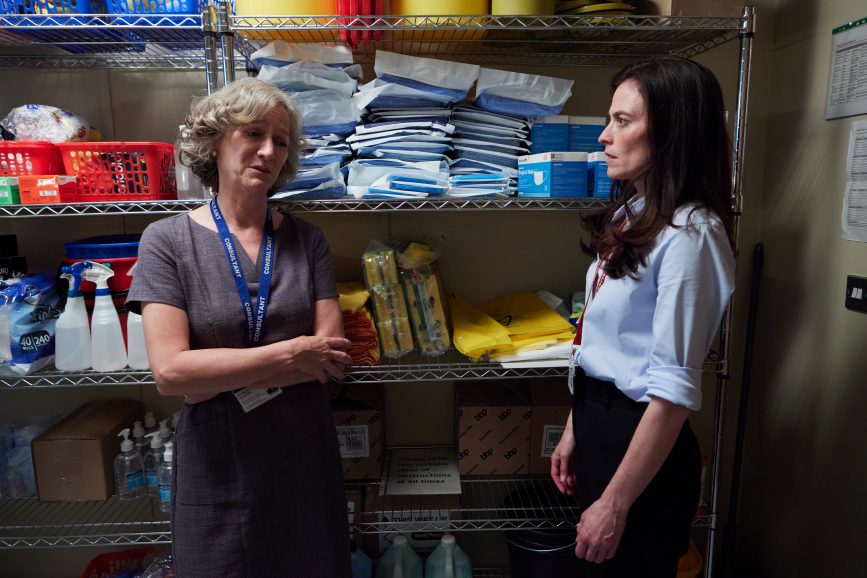
How do you approach lensing specific episodes of a series, as opposed to a feature or full series? How do you imprint your ideas whilst being consistent to the project?
It all comes from looking at the scripts as to where we are in the story and adapting from there. I’m very keen to keep continuity across a series so the audience always have a clear understanding of what they are watching, but to push the visual language where it will help to elevate the story. Amanda has an amazing understanding of narrative which makes that process all the easier. I really enjoyed working with Tom Williams to implement the feeling of each scene whilst keeping on theme. It’s quite easy to stick to a style of shooting but knowing when to break out of that can be tricky. Tom also has a great grasp of story, so we enjoyed developing that relationship as we went.
What was the most difficult sequence in the two episodes you shot?
The stabbing scene in Episode 4 outside the ladies’ night venue (where Mariam and Catherine save a young man’s life), leads onto Catherine performing a clamshell thoracotomy in resus back at the hospital. This is a brutal procedure where the chest is cut across the rib cage to expose the heart and lungs. Catherine then gets wheeled out straddling the patient with her finger plugging the hole in his heart.
This sequence led to hours of preparation with the consultants, actors, art department, SFX team, Ads, and Amanda Blue (our director), to figure out how we could make this all look believable. We wanted to give Lara the best chance of acting out the scene and fitting everything into a very tight schedule. The surgery scenes and Resus scenes all took a lot of planning to ensure we had everything in place.
Our night exterior location where the stabbing took place was quite big too, and we wanted to light the area so Tom and I could point the cameras in almost any direction. David Manfield, and his amazing lighting team set about building two large soft boxes on cherry pickers for us. One carried a set of nine Vortex 8s in a 12’x12’ soft box over the main square and a smaller 8’x8’ box with six Vortex 8s in further down the street. We added in additional accent lighting along the street and in the background too. With almost all the fixtures being LED and on remote, we had full control of colour and luminance saving us lots of time.
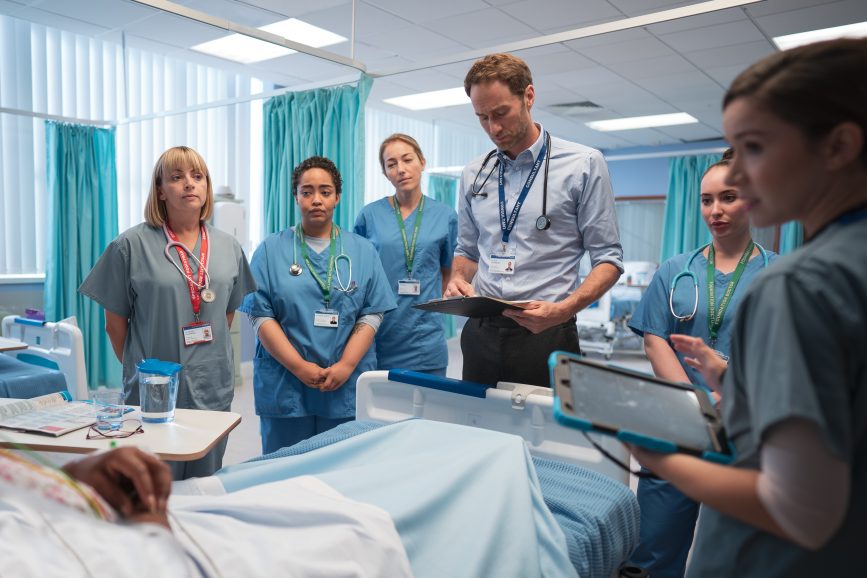
What is your favourite shot in this project?
I have a few favourite in there but one that jumps out is Helen standing in the window of the cafe looking down on Amanda wheeling her wife away, which is reflected in the window. Our grip team: Stuart Gibson and Ian Moorhouse rigged the camera in a Ronin 2 below the bucket on the cherry picker that we had standing by to give us the height and hide the bucket and camera. Also, the sequence where Maryam is dancing in the kitchen is just joyous, you can’t help but smile.
Is there anything you learnt from this project that you’ll take onto every project going forward?
As ever, be adaptable. Embrace a happy accident too. There were scenes we had prepped in a certain way that developed over time or changed at the last minute. I’m sure we’ve all been in these situations. The scene where Catherine performs an emergency delivery for Sarah was originally to be shot in Catherine’s slick style much like the surgery and resus scenes in earlier eps. We had a very tight schedule that day and time was creeping up on us. Amanda and Tom Williams convinced me shooting handheld would not only help us get the day shot but that it would elevate the situation. It was totally the right decision of course and I love how the scene looks with the contrast to the calmness of surgery.
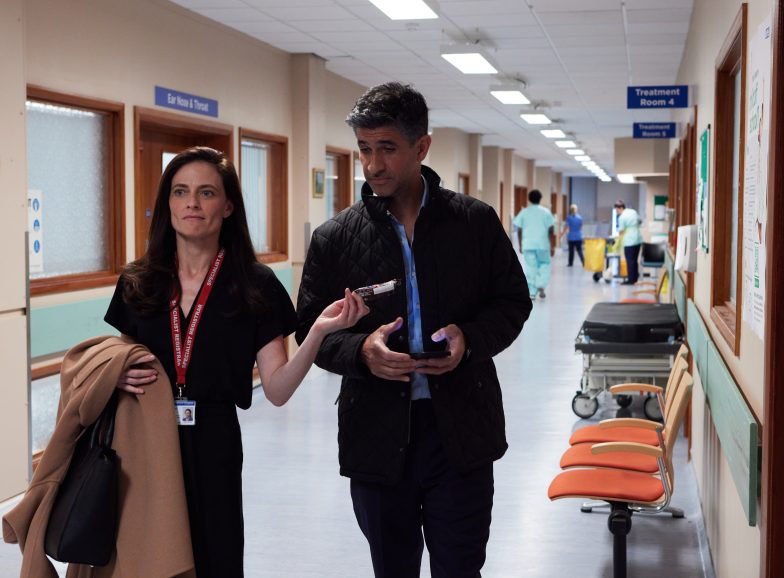
–
Greg Duffield is represented by Casarotto Ramsay & Associates Ltd









